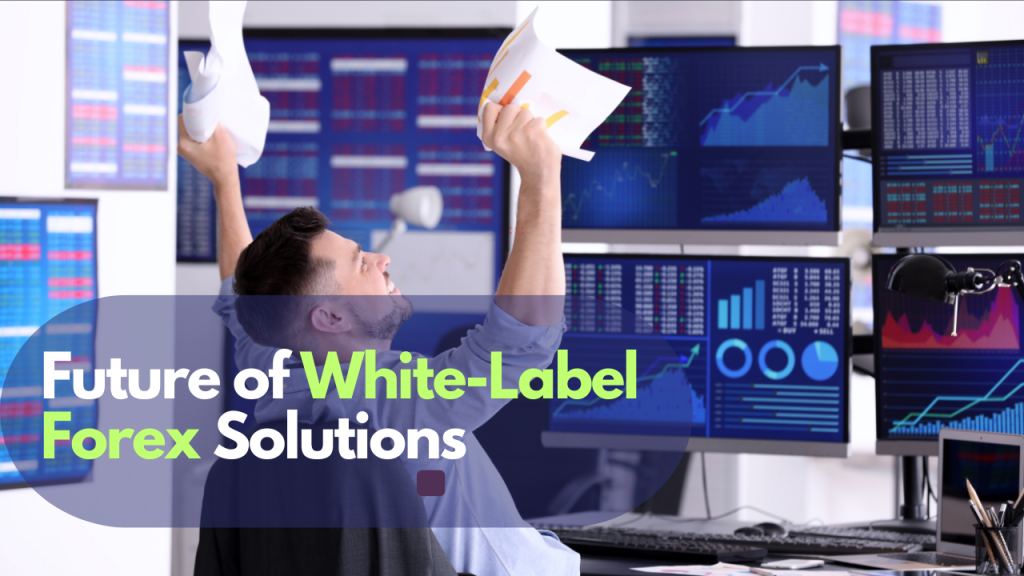Introduction: The Evolution of White-Label Forex Solutions
Over time, the forex market has changed dramatically, and new technology has made it simpler for companies to enter the market. White-label solutions are among the most often used methods for launching a forex brokerage. Instead of creating their own trading platforms from scratch, these solutions enable companies to take advantage of already-existing ones like MetaTrader 4 (MT4), MetaTrader 5 (MT5), and c-Trader.
White-label forex solutions offer a scalable, affordable, and fast-to-launch method of managing a brokerage. However, a lot of people are wondering if white-label forex solutions will still be viable in 2025 given the growing competition, more restrictions, and changing technology. The present situation of the white-label FX market, its difficulties, and if it is still a profitable prospect will all be covered in this article.
Why White-Label Solutions Became Popular
Because of their low entry costs and effective operations, white-label forex solutions have become more and more popular. Brokers still pick them for the following main reasons:
- Faster Market Entry: Brokers can use a white-label solution to debut in a matter of weeks rather than creating a trading platform from the ground up.
- Savings: A white-label solution offers the infrastructure at a fraction of the price of a custom platform, which can cost hundreds of thousands of dollars to build.
- Access to Proven Technology: Traders all around the world have already tested and embraced platforms like MT4, MT5, and c-Trader.
- Integration with Liquidity Providers: To ensure smooth transaction execution, white-label brokers can establish connections with top liquidity providers.
- Regulatory Support: A lot of white-label companies provide compliance support, which makes following currency rules simpler.
Current Market Trends in 2025
Although white-label forex solutions are still a profitable business strategy, new trends are causing the sector to change:
1. Increased Competition
It’s harder to stand out now since there are thousands of brokers in the industry. To draw in traders, brokers must offer distinctive services like copy trading, analytics driven by AI, and customized trading tools.
2. Rise of Alternative Trading Platforms
Even while MT4 and MT5 still rule the market, emerging platforms like c-Trader, x-Station, and IoTrade are becoming more popular because of their improved user experiences, sophisticated trading tools, and faster execution times.
3. Demand for AI and Automation
Algorithmic techniques, AI-powered risk management, and automated trading are becoming more and more popular among traders. AI-driven trading systems can give white-label brokers a competitive advantage.
4. Stricter Regulations
Forex brokers are subject to stricter compliance requirements from regulatory agencies such as the FCA (UK), CySEC (Cyprus), and ASIC (Australia). White-label suppliers must now make sure that their products comply with the most recent legal requirements.
5. The Role of Proprietary Trading Firms (Prop Firms)
White-label solutions are in higher demand as a result of the growth of prop trading companies. White-label platforms are used by many prop businesses to track performance and manage risk, and they also fund traders.
Challenges Facing White-Label Brokers in 2025
1. Increasing Regulatory Pressure
As regulations change, brokers must adhere to stringent Know Your Customer (KYC) and anti-money laundering (AML) guidelines. Higher capital requirements for forex brokers are being implemented in some nations, which makes it more difficult for newcomers.
2. Competition from Established Brokers
Small white-label brokers find it more difficult to compete with large forex brokers because they spend millions on marketing, customer acquisition, and technology.
3. Technology Dependence
Due to their reliance on third-party platforms, the majority of white-label brokers are unable to fully personalize their offers. When compared to brokers who use proprietary trading systems, this could be a drawback.
How to Stay Profitable as a White-Label Forex Broker
To succeed in 2025, brokers must focus on:
- Targeting Niche Markets: Focusing on underrepresented areas or trading philosophies (such as Islamic forex accounts or high-frequency trading).
- Improving Customer Service: Providing multilingual assistance around-the-clock to increase trader retention.
- Combining Several Asset Classes: Going beyond forex to include equities, commodities, indices, and cryptocurrency.
- Assuring tight spreads: And quick execution speeds by collaborating with reliable liquidity providers.
- Investing in Digital Marketing & SEO: To draw in traders, use SEO tactics, social media marketing, and Google Ads.
Case Study: Successful White-Label Brokers in 2025
Many white-label brokers have scaled into full-fledged brands by implementing innovative business models. Examples include:
- Broker A: Grew from a white-label MT5 provider to a fully regulated multi-asset broker.
- Broker B: Leveraged copy trading to attract beginner traders and increase profitability.
- Broker C: Focused on emerging markets in Africa and Asia, tapping into high-growth regions.
Conclusion: The Road Ahead for White-Label Forex Brokers
In 2025, white-label forex solutions are still a lucrative business strategy, but success necessitates modification. In order to stay ahead of the competition, brokers need to concentrate on technology, regulatory compliance, and distinctive value offerings.
